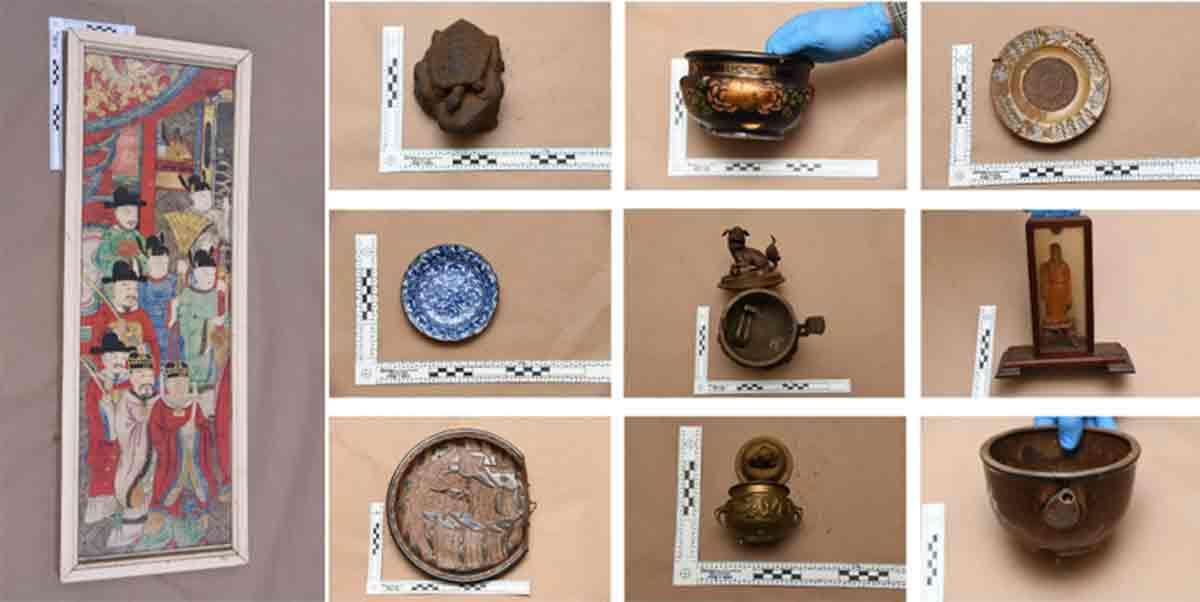Treasures Looted from Okinawa During WW II Returned Eight Decades Later
Seeking to correct an 80-year-old injustice, the Federal Bureau of Investigation (FBI) has returned a collection of looted cultural artifacts to the people of Okinawa, Japan. These artifacts were previously in the possession of an American serviceman who served during World War II, but was not actually a part of the U.S. invasion and occupation of the island of Okinawa during the latter stages of that great and terrible conflict.
Just a few days ago, the FBI officially handed over 22 artifacts stolen from Okinawa cultural institutions in 1945 to authorities in Japan, who were delighted to receive this unexpected treasure. The cache of 18th and 19th century artwork included several vivid and colorful painted scrolls, multiple pieces of ceramic pottery and a hand-drawn map of Okinawa, which is Japan’s largest island and now home to well over one million people.
- 9,000-year-old Human Remains May Shed Light on Prehistoric Okinawa
- Ryukyu Kingdom: Castles, Customs, and China and Japan's Rivalry
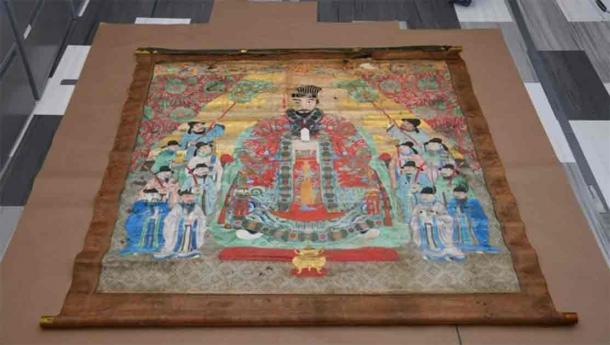
One of the hand painted scrolls. (FBI Boston)
Somehow, this collection of prized cultural artifacts ended up in a storage case belonging to an WWII-era American soldier who lived in Massachusetts during the final years of his life. Sometime after he passed away his family was going through his possessions, and they were surprised to find items that looked valuable and historically significant. Their confusion cleared when they found a typewritten letter confirming that the items had been stolen by looters, who took advantage of the chaos and disorder on Okinawa after American forces invaded the island on April 1, 1945.
In the immediate aftermath of Japan’s defeat and surrender, many valuable items were taken from cultural institutions and people’s homes in Okinawa and elsewhere, and ultimately removed from the country to be sold on the black market (or kept by the soldiers who took them). Most of these artifacts have never been recovered, which is why the surrender of this impressive collection of looted goods is considered so unusual and surprising.
- Did Japanese Population Originate with this Minatogawa Man?
- A Japanese Fan Became a Deadly Weapon in the Right Hands
An American Family Makes Amends for an Historical Crime
It isn’t clear exactly how the American serviceman from Massachusetts acquired these items, since he didn’t serve in the Pacific theater during the war. But the letter he had in his possession proved that he knew them to have been stolen items, and after doing a little investigating on their own the family decided to notify the authorities to let them know what they’d discovered.
“They came across what appeared to be very valuable Asian art,” Special Agent Geoffrey J. Kelly from the Boston Field Office said in an FBI statement about this case. “There were some scrolls, there were some pottery pieces, there was an ancient map. They looked old and valuable. And because of this, they did a little research and they determined that at least the scrolls had been entered about 20 years ago in the FBI's National Stolen Art File.”
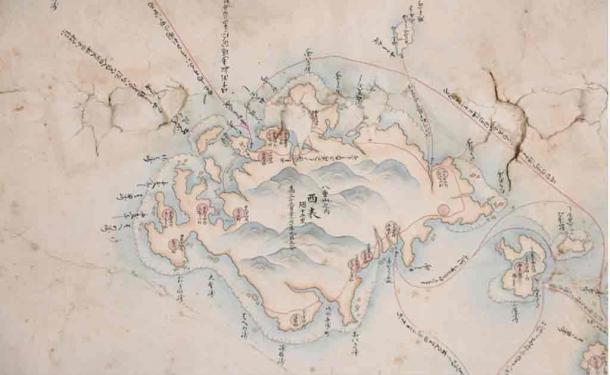
Hand drawn map of Okinawa dating to the 19th century. (FBI Boston)
As a member of the FBI’s Art Crime Team and the lead investigator for art crime in the Boston area, Kelly was familiar with the story of how valuable cultural treasures were removed from Japan following the end of World War II.
The painted scrolls were considered an especially significant loss, which is why they had been reported missing in 2001 by Japan’s Prefectural Board of Education, after which they were added to the FBI’s stolen art database. These lifelike paintings were made in the 18th and 19th centuries, and consisted of human figures dressed in the finest imperial dress worn by aristocrats from the Ryukyu Kingdom, which ruled Okinawa and its surrounding islands from 1429 through 1879, functioning as minions of the famous Ming Dynasty through the early 17th century.
After collecting the artifacts from the Massachusetts family, the FBI shipped them to the Smithsonian Institution’s National Museum of Asian Art in Washington, D.C. for further analysis. Agent Kelly escorted the objects to their final destination, and was on hand when the scrolls were unfurled for the first time in decades.
What they showed were detailed portraits of Okinawan royalty and their closest supporters, all decked out in strikingly beautiful red robes with blue and gold trimming.
“It's an exciting moment when you watch the scroll unfurl in front of you,” Kelly said. “You witness history, and you witness something that hasn't been seen by many people in a very long time.”
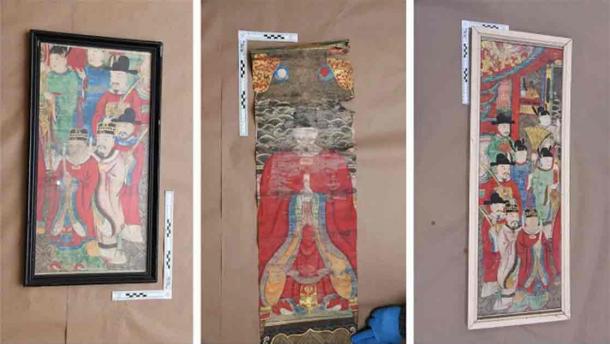
Three of the scroll paintings that had been loaded to the FBI stolen art database. (FBI Boston)
After finishing their examination of the 22 objects, Smithsonian officials turned the valuable artworks over to the U.S. Army Civil Affairs & Psychological Operations Command. This organization then transported the artifacts overseas to Okinawa Prefecture, where they were given to a designated representative of the Japanese people, Okinawa Governor Denny Tamaki.
“It is very meaningful that the FBI, along with others in the U.S. Government, have cooperated to realize this return,” Tamaki said, during the official transfer ceremony on March 15, 2024.
These treasures will now be put on permanent public display in their homeland, where Japanese citizens curious about their country’s amazingly eventful history can come to see them at any time.
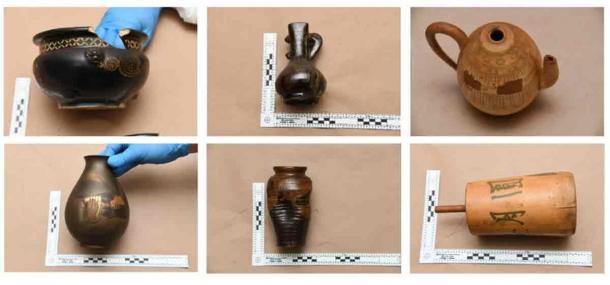
Six more of the total 22 objects that were recovered and repatriated. FBI Boston
A Stolen Legacy Returned
While the painted scrolls, hand-drawn map and ceramic pottery from the Ryukyu Kingdom days have undeniable monetary value, their importance to the people of Okinawa lies far beyond such utilitarian considerations.
“It’s really important for us as stewards of artifacts and cultural patrimony to make every effort that we can to see that these go back to the civilizations and the cultures in the countries where they belong,” Special Agent Kelly explained. “A nation’s cultural identity is really summed up in the artifacts and the history. This is what makes a culture. And without it, you’re taking away their history.”
But in this case what was taken away has now been returned, as an impressive collection of artifacts that highlight Japan’s rich culture and history is finally in the hands of its legitimate owners, eight decades after it was originally pilfered. This is thanks primarily to the determination of a family in Massachusetts to do the right thing rather than trying to profit off of a past injustice.
Top image: Some of the 22 looted, historic items that have been repatriated to Japan. Source: FBI Boston
By Nathan Falde
















